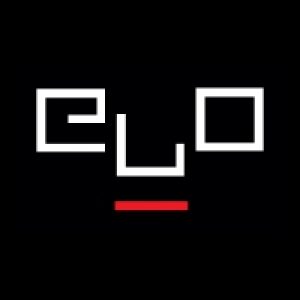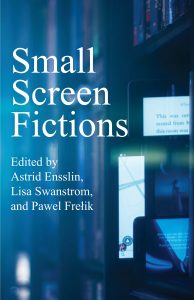It’s Fun!
As an emerging field of literary creativity, electronic literature offers an unparalleled richness of cross-field pollinations, combining literary effects with games, graphic design, sound design, generative coding, animation, moving images, and a plethora of possible interfaces, including sight, sound, touch, gesture, even breathing. Skipping over the usual gatekeepers for print literature, electronic literature offers multiple opportunities for collaborative and web publishing, with blogs, journals, websites, and collections devoted to it (see a partial list below). Moreover, for millennials accustomed to interacting with screens, electronic literature may seem more familiar and enticing than traditional print literature, manifesting in the electronic environments of cell phones, tablets, and computers. While much of what is on the web short-circuits critical inquiry in favor of conspiracy theories, rumor, and misleading or unsubstantiated claims, electronic literature uses the historical resources of literature such as satire, parody, exaggeration and narrative to nourish critical thought and strengthen close reading skills.
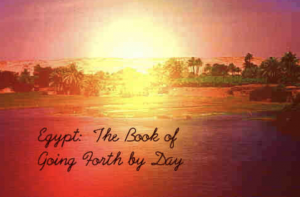
M.D. Coverley’s Egypt: The Book of Going Forth by Day
Expanded Repertoire
Electronic literature breathes new life into the perennial question “What is literature” by moving beyond words to sound, graphics, gestures, and spatial complexity in literary forms, for example in hypertext with multiple networks of links or in augmented or immersive virtual reality literary texts. It offers opportunities to foster cross-disciplinary literacies in the classroom, challenging students to understand how different modalities such as sight, sound, color, form, animation and gesture work together to create powerful new kinds of aesthetic experiences.
Danny Cannizzaro & Samantha Gorman’s Pry
Screen Poetics
While contemporary students are very familiar with screens, they may not think much about how the affordances of different kinds of screens affect the kinds of displays they see and how they interact with them. The small size of cell phone screens, for example, make long-form narratives difficult to follow and almost impossible to grasp structurally. Ranging across a wide variety of screens, electronic literature enlightens about the constraints and possibilities of different literary forms in relation to screens, including digital poetry, literary-inflected games, narrative, autobiography, creative nonfiction, and other literary forms. Students learn about the aesthetics of the different forms by interacting with them, engaging them through a much wider range of interfaces than those offered by print literature.
Small Screen Fictions, a special issue of Paradoxa
Code Literacy
Increasingly, works of electronic literature are designed to enhance code literacy, inviting users to think about and engage with the code underlying the screenic display. Generative literature, for example, uses algorithms to generate the screen display by slotting in words from a database in the grammatically appropriate places. Moreover, works such as Nick Montfort and Stephanie Strickland’s Sea and Spar Between, a mashup of Emily Dickinson’s poetry with Melville’s Moby Dick, embeds a critical essay on the piece in the comments section of the code, encouraging users to “view source” along with reading the display.
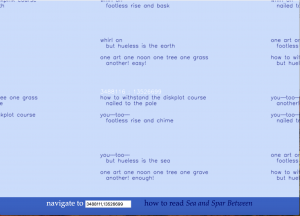
Nick Montfort and Stephanie Strickland’s Sea and Spar Between
Join a Vibrant Community of Makers
Working with electronic literature offers opportunities to interact directly with others creating and interpreting these texts, including writers, teachers, designers, coders, gamers, critics, and readers. The digital community is exciting, diverse, and international, including folks in Spain, Norway, Switzerland, South America, and other countries across the globe.
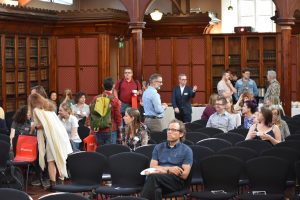
2019 Electronic Literature Organization International Conference in Cork, Ireland
